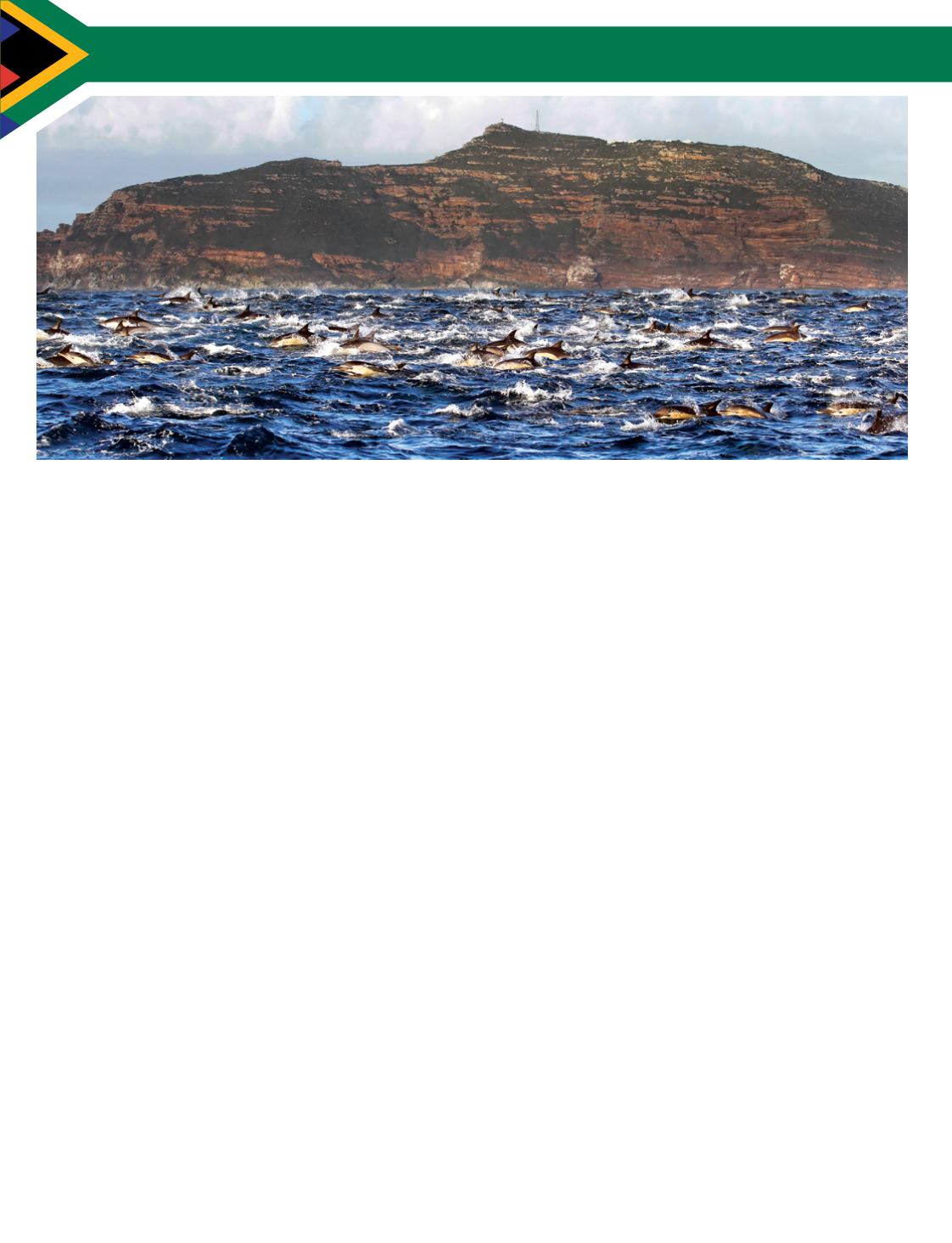
The KwaZulu-Natal coast of South Africa is pleasantly affected
by the warm waters of the Agulhas Current, which run down
from the equator and make the country’s east coast warm and
tropical. Even at 30° south divers will experience balmy waters
(72°F to 77°F in summer and 60°F to 70°F in winter) and a
smorgasbord of tropical and temperate species vying for space
on the fabulous and far-out rocky reefs of Aliwal Shoal and
Protea Banks.
Aliwal Shoal and Protea Banks are home to a great diversity of
hard and soft corals, sponges, reefs fish (more than 1,200 species),
turtles, invertebrates and sharks. In the summer months you
might see whale sharks, manta rays, guitarfish and tiger sharks.
Protea also gets hammerheads and Zambezi (bull) sharks. In the
winter months you can dive with congregations of ragged-tooth
sharks (also known as sand tiger or grey nurse sharks), and you
can listen for the eerie calls of humpback whales as they head
north to breed. Year-round you can experience some of the best
shark encounters on earth with as many as 80 blacktips circling
around a baited dive in midwater near either of these reefs.
Aliwal Shoal
Aliwal Shoal is three miles offshore and partially in a marine
protected area. It is serviced by several dive-charter operators
in the small town of Umkomaas, which has grown into an
interesting little dive-bum mecca. The charter boats are
mostly RIBs, and they usually launch from the Umkomaas
River. Boarding the RIB, which accommodates 10 divers and a
divemaster, is quite easy in the river, but you’ll have to hold on
tight as the skipper powers under the bridge and out into the
surf. This often involves some fast turns or punching through
waves — it’s all quite thrilling. If the tide is too low the boats will
launch from the beach, and that involves pushing the boat out
into the sea and only jumping into the boat once the engines are
in sufficiently deep water. Diving at Aliwal is not for wimps.
It’s just a 15- or 20-minute boat ride out to the shoal, and
boats often spot dolphins, whales (in winter), flying fish and
seabirds on the way. Once at the site, divers gear up, and it’s
“3-2-1-go” with a backward roll off a pontoon. Visibility is
inconsistent, particularly in the summer, but it averages about
30 feet and peaks at around 80. A mild current and a little
surge are typical, and stronger currents are common as well.
The reef runs north to south for three miles, and there are
many lovely spots of interesting topography between 30 and
90 feet. Most dives are no deeper than 60 feet.
A summer highlight is the presence of guitarfish and
rays — including mantas that cruise overhead. In the winter
the highlight is the ragged-tooth sharks (Carcharias taurus)
that congregate there to breed. You can see 15 to 50 of them
hovering in caves and scattered all across the reef — all totally
undisturbed by divers. Whether you see sharks or not, make
sure to look out for fallen shark teeth in the sand.
Protea Banks
If Aliwal is not for wimps, Protea is restricted to mermaids and
Neptune’s brethren — confident and experienced divers only. It’s
well worth tuning up your skills (perhaps at Aliwal Shoal) before
Aliwal ShoalandProteaBanks
B y P a m L e N o u r y
70
|
FALL 2013
TOBIAS FRIEDRICH


